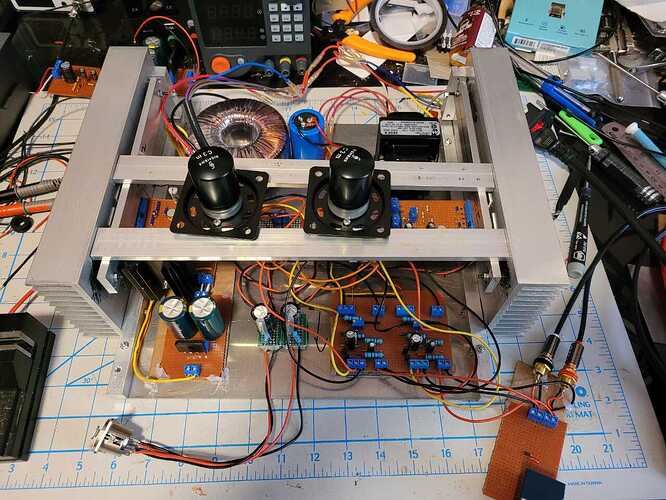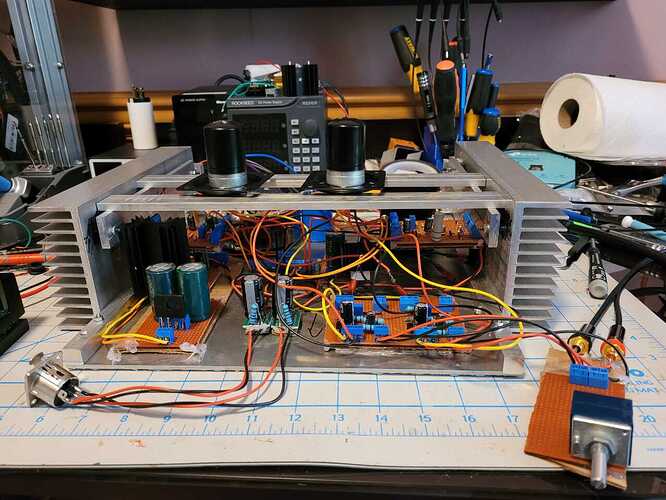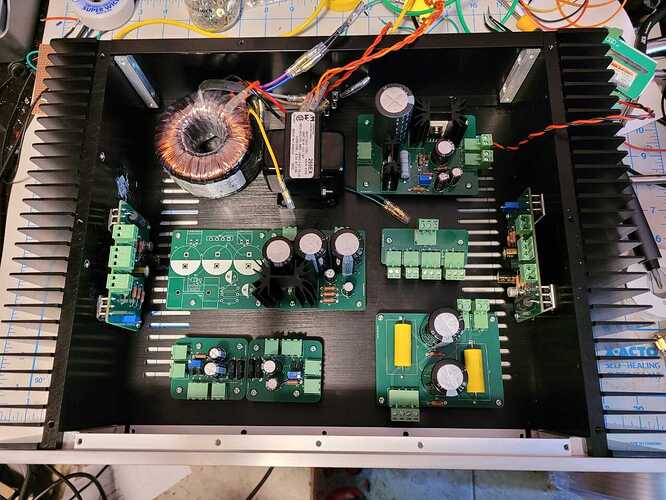It’s a learning exercise, I’ve learned a great deal about both design and execution building both Amps. I’ll probably revisit the Tube amp at some point and apply some of what I’ve learned about grounding in this build to it.
It’s equal parts fun and frustration, it’s rewarding when it works, but trying to track down what’s causing something is quite maddening on occasion.
Depends what you mean by that.
You very much have to validate the circuit before you can really fine tune components.
This build wasn’t very expensive (the tube amp was), I reused some parts I had on hand and I probably have $300-$400 in parts in it, most of that the transformers and Tubes. The case will cost me another $150 probably. I have some high quality RCA, XLR and Banana Jacks jacks that were $15+ so figure at least $100 for those, the stepped attenuator was $100, I will probably buy a 300V transformer for the tube section, rather than using the 380V one in there now $60.
Moving it to circuit boards probably another $300, though I’ll have spares. I could save money here if I went to a single board, but I want to retain the modularity, I have a couple of alternate output section designs I want to try.
I don’t think I I’ll spend $60 on a resistor (which is what the Audio Note Tantalum Film resistors cost). But when I move this one to circuit boards, I’ll replace the cheap components with Vishay Dale metal film resistors and Nichicon Electrolytics, which will add another $100 to the build probably (mostly in the PSU caps), I’ll splurge on the coupling Caps, and the output caps that will add probably $300.
I might mess around with various other options for resistors and caps afterwards.
There isn’t really any compromise in the design itself.
You can save a lot by finding a workable off the shelf case, and skimping on the PSU by limiting the output power so you can use wall warts, though you’d have to come up with something that will work for the Tube supply, something like the HaggermanTuba design would probably work.
But it’s not a thing you do to save money, though even in it’s current form I feel it sounds better than a lot of multi thousand dollar amps I’ve heard. But I’m biased and I’m the only person to ever hear it ![]()





